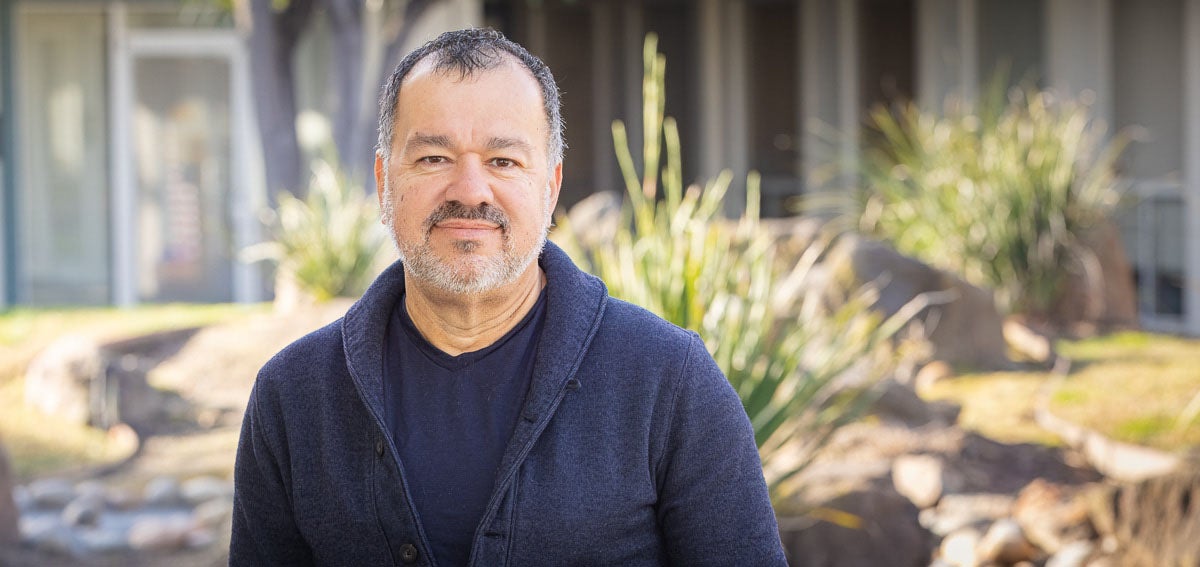|
Getting your Trinity Audio player ready…
|

Fueled by billions of dollars of investments, California’s public behavioral health system is on a transformative journey toward new and innovative models of care. Yet, despite these exciting changes, many Californians with mental illness or substance use disorder continue to face big problems accessing the support they need. The key to getting this population better access to care and improved health outcomes lies in unlocking the data that reveal who is being served and what interventions work. As state leaders rethink behavioral health data systems, it is crucial that they listen to the voices of providers and administrators on the front lines.
Understanding health care data is a valuable and powerful tool. Talking about managing data may be less exciting than discussing innovative treatments or seeing a person get care they need, but like a Rosetta Stone, data reveal who is and isn’t being served, highlight what is working, and determine where dollars go. This in turn affects access, quality, and outcomes.
While California’s public behavioral health system has always amassed lots of data, that information has been burdensome to collect and too inconsistent to tell a clear story. Now, the state has embarked on ambitious efforts to improve integration of behavioral health data across systems and programs. This effort is organized under the Behavioral Health Transformation umbrella, which includes the Medi-Cal CalAIM initiative and the Behavioral Health Community-Based Organized Networks of Equitable Care and Treatment (BH-CONNECT) initiative, as well as the Behavioral Health Services Act (Proposition 1) passed by voters last year.
CHCF and the Behavioral Health Data Project recently published a report that analyzes public behavioral health services’ data collection, measurement, and reporting practices. The authors interviewed state and county administrators and behavioral health providers. Here are their pain points and priorities for state and local action as California endeavors to align and modernize behavioral health measurements.
Understanding Health Care Data
Administrators and providers were concerned that behavioral health data they collect may not be very helpful, can be voluminous, and often is gathered via burdensome processes. For instance, some processes still require extensive manual data entry, resulting in high costs for staffing and software resources as well as decreased data quality and timeliness.
As well, California’s 58 counties lack uniform data requirements, and those disparate requirements are not consistently reflected or updated in providers’ contracts. Counties are sometimes required to send the same data to multiple state agencies — or even to multiple departments within the same agency.
When it comes to data collection, counties, public and private managed care plans, hospitals, schools, and jails all play different roles. Sharing data across a siloed system is challenging. Yet, many exciting new initiatives in the public behavioral health system depend on better data linkages between Medi-Cal managed care plans and county behavioral health plans, or between health care and housing systems.
Finally, challenging processes and poor quality limit the utility of some data just. For example, Full Service Partnership programs collect a wide array of data using three distinct collection forms. However, outdated technology at the state level and inconsistent protocols at the local level mean that these data can’t reliably demonstrate the value of those programs across California.
Focus on Measuring Quality and Outcomes
Behavioral health measures fall into broad categories: service use, service cost, quality of care, outcomes, and demographics and equity. Because funding and payment have traditionally driven reporting, the system is more practiced at measuring service use and cost than the other categories.
Interviewees agreed that California needs to go beyond tracking provided services and begin identifying and reporting on the quality of services by:
- Using process-oriented quality measures, such as Healthcare Effectiveness Data and Information Set (HEDIS) measures, other measures of timeliness, and indicators that individuals are served at the appropriate level of care
- Tracking the amounts and types of service that lead to successful outcomes
- Measuring productivity, value, and financial performance
In addition, all interviewees wanted outcome measures that demonstrate that people are getting better, experiencing higher quality of life, and expressing satisfaction with services they receive. These may include resolution of functional impairments and condition-specific symptoms, client self-assessment of their own quality of life, and social indicators of success. Recent efforts like CHCF’s Cultivating Outcomes through Equity in Behavioral Telehealth (COE-BT) learning collaborative and the clubhouse model, pioneered by Fountain House (now a Medi-Cal option under BH-CONNECT), have demonstrated realistic approaches to implementing recovery-oriented outcome measures in behavioral health settings.
Address Disparities with Better Demographic Data
Individual counties and the state as a whole have greatly increased their collection and reporting of demographic data as California increasingly focuses on equity in behavioral health care. However, lack of coordination among state departments and agencies ensures ongoing inconsistencies in data requirements. Different programs may break down race and ethnicity options differently. For instance, while some include only high-level categories, such as Hispanic and Asian, others have more specific requirements across orientations and identities. State agencies are working to align with updated demographic data guidelines from the federal Office of Management and Budget (OMB), but the current lack of consistency exacerbates existing administrative challenges to collecting data from clients.
Upgrade Dashboards and Reporting
California has made progress when it comes to reporting data, and respondents cited improved public data dashboards from state agencies. Unfortunately, some of these dashboards are no longer relevant, and few cut across programs, making it difficult for stakeholders to get a comprehensive picture of state or local progress. What’s more, the process of getting data into reports and public dashboards is long and unwieldy, often taking months or even years for counties and the state to declare claims data to be final.
Some large counties aren’t waiting for the state to act. Instead, they’re analyzing and reporting their own data. Some have developed sophisticated dashboards, which requires dedicated teams to collect, report, and analyze data — services that may be unavailable to small- and medium-sized counties.
What’s Next
Some promising changes in behavioral health measurement and reporting are underway. One is the 2023 launch of a semi-statewide Electronic Health Record system for behavioral health providers by the California Mental Health Services Authority.
As well, Medi-Cal’s recently adopted Behavioral Health Accountability Sets builds on the California Department of Health Care Services’ (DHCS’) long-standing Managed Care Accountability Sets and requires counties to report on nine different quality measures. And DHCS recently released its first set of behavioral health plan ratings (reporting 2023 performance) (PDF) using the new accountability sets.
Finally, DHCS has convened a Behavioral Health Transformation Quality and Equity Advisory Committee (QEAC), which includes experts from across California’s public behavioral health system. (Editor’s note: Both authors serve on the QEAC.) Over the last six months, the QEAC has helped identify population-level behavioral health measures that reflect community well-being in domains including access to care and homelessness. The data gathered will inform counties’ BHSA planning and resource allocation processes. This effort is now entering its second phase, which involves measuring performance across delivery systems.
But much remains to be done, including:
- Developing and clearly communicating a consistent statewide strategy. Currently, quality and outcomes are defined at a program level, if they are defined at all. However, there is no consensus on what quality and success mean for behavioral health services statewide. Through Behavioral Health Transformation, the state has the opportunity to simplify, prioritize, and align performance.
- Enabling counties and the state to share leadership roles in managing behavioral health data. Counties should be able to bring forward actionable data to help guide state policy, inform decisionmaking, and advocate for federal support to address California’s specific challenges. The state should also help counties understand how best to use data to guide those decisions.
- Educating the public on how behavioral health services should work and how they interact with other health and social services programs. This includes using population health measures, such as education or employment, that demonstrate movement outside of the behavioral health system, rather than current data measures, which largely depict the way individuals move within the behavioral health system.
- Focusing on recovery-oriented, strengths-based data that reflect clients’ values and their stories. Doing so improves our ability to measure what matters to people receiving services and what it means to help them improve the quality of their lives. California’s data efforts should pay special attention to the diverse voices of people receiving services to ensure that we measure what is important to them, use accessible language, and are culturally responsive.
As California builds a behavioral health system that meets everyone’s needs, we can and should ensure our data demonstrate the impact of that work.
Authors & Contributors


Samantha Spangler, PhD
Owner and CEO, Behavioral Health Data Project
Samantha Spangler, PhD, is owner and CEO of Behavioral Health Data Project, a Sacramento-based consulting firm focused on helping behavioral health providers use data more effectively to understand and help the communities they serve. Spangler has evaluated behavioral health and social services programs at the state, county, and local level and supported behavioral health agencies to develop data collection and reporting systems that promote high quality, recovery-oriented, and equity-focused behavioral health services.

Hayne Palmour IV
Photojournalist
Hayne Palmour IV worked as a staff photographer for San Diego County newspapers for more than three decades, including eight years at the San Diego Union-Tribune. He covered news, features, and sports and continues working as a freelance photojournalist in Southern California.
In 2003, the North County Times published a book featuring Palmour’s photographs of the 2003 US invasion of Iraq titled A Thousand Miles to Baghdad.
He has an associate’s degree in photography from Chowan College in North Carolina and a BA in psychology from the University of North Carolina-Wilmington.




